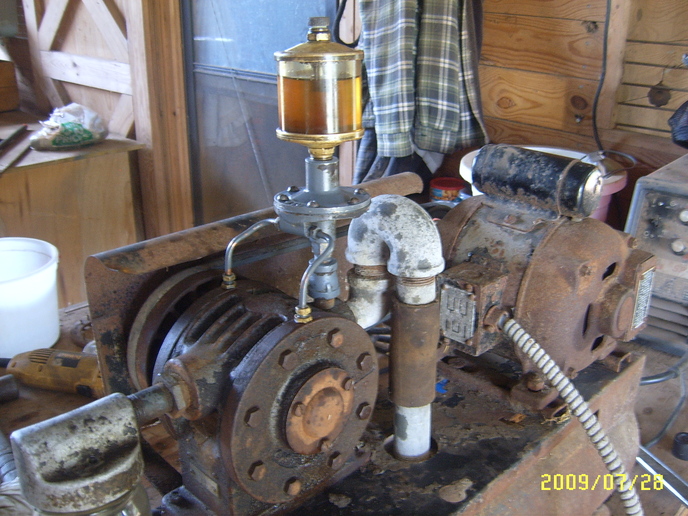farmer101IL
Member
Hey all i have this vacuum pump. Can"t seem to get the oiler to work. The pump it"s self works fine. The vanes are good not stuck. I pulled the side off and pulled the vanes. Lubed it up good, made sure the oil holes were open. Everything is good. Lot"s of vacuum.
I pulled the oiler apart cleaned it. The diaphram is aluminum, kind of neat, thought it would be rubber. Springs and such all look good . Holes are clean and open.
So how does the oiler work? Vacuum? I also see that the two oiling lines to each side of the pump, if i remove the lines there is a little pressure not vacuum at the connection to the pump.
So i have a little pressure out of the pump at the lines, and then vacuum to the oiler.?
Also is the cap screw on top of the oiler supposed to be open or closed? Is there pressure or vacuum in the oiler glass container?
Hope my discription isn"t to vague.
Anyways how the heck does this thing work.
One other thing how much oil should be dripping into the outlet jar?
Thanks all
Farmer

I pulled the oiler apart cleaned it. The diaphram is aluminum, kind of neat, thought it would be rubber. Springs and such all look good . Holes are clean and open.
So how does the oiler work? Vacuum? I also see that the two oiling lines to each side of the pump, if i remove the lines there is a little pressure not vacuum at the connection to the pump.
So i have a little pressure out of the pump at the lines, and then vacuum to the oiler.?
Also is the cap screw on top of the oiler supposed to be open or closed? Is there pressure or vacuum in the oiler glass container?
Hope my discription isn"t to vague.
Anyways how the heck does this thing work.
One other thing how much oil should be dripping into the outlet jar?
Thanks all
Farmer


